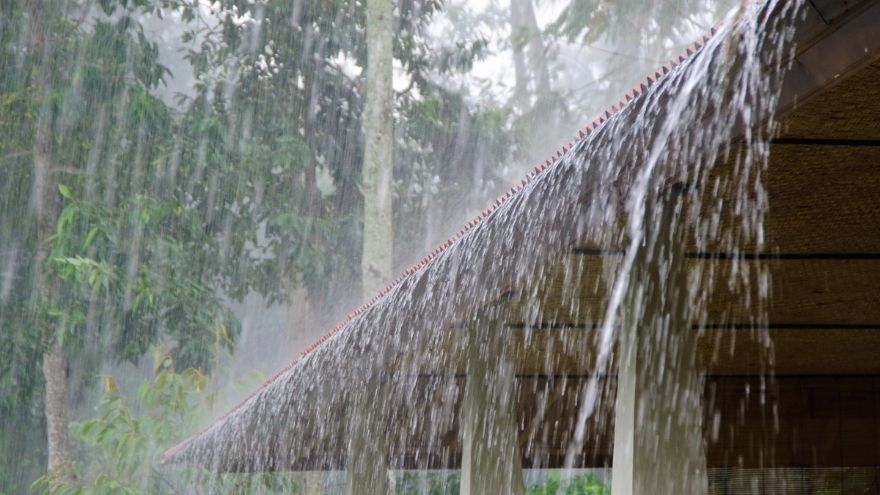Heavy rains can make quite a mess around the house. To avoid a wet basement or a flooded garage, it is worth considering effective protection. In this text, we suggest how to protect your building from water - from simple solutions to modern systems. You will also learn how to use rainwater wisely, instead of fighting it.

Check out the rainwater tanks at the Onninen wholesaler
The influence of terrain on flooding of a house or plot
The location of a building can make a big difference when it comes to the risk of flooding. Houses at the foot of a mountain or in a depression are real water traps. What can be done about this? The simplest solution is a good trench around the building . Such a trench will drain water away from the foundations. It is also worth considering drainage - it is an underground pipe that collects excess water.
Another clever idea is to shape the terrain so that water flows away from the house. Sometimes all you need is a little sand and a shovel. And if you live on a slope, maybe it's worth considering a solid fence or wall that will stop water from coming from above?
What are the effects of flooding your home?
 Flooding your home is no joke. Water can make quite a mess. Foundations and walls can start to crumble, and mold can quickly take hold inside . Furniture, electronics - everything can go up in smoke. And what's worse, a wet electrical system is asking for a fire.
Flooding your home is no joke. Water can make quite a mess. Foundations and walls can start to crumble, and mold can quickly take hold inside . Furniture, electronics - everything can go up in smoke. And what's worse, a wet electrical system is asking for a fire.
Basements and garages suffer the most - water always finds its way there. Floors, wallpaper, everything has to be replaced. And renovation after such a flood? It's better not to ask about the costs.
Modern rainwater drainage systems
Fortunately, it's the 21st century and there are plenty of clever solutions. Rainwater tanks are essential - they collect excess water instead of letting it run around the property. There are those that are buried in the ground (underground rainwater tanks) and those that are above ground (above ground rainwater tanks). The choice depends on the space you have.
Accessories for rainwater tanks are also very important. It is also worth considering something like rainwater inlets - such drains that catch water from sidewalks or driveways. Rain sensors? Clever contraptions that will turn on the pump themselves when it starts pouring. A rainwater collector on the gutters will also be useful outside the building - it collects water straight from the roof.
How to properly manage rainwater?
Smart rainwater management is not only protection against flooding , but also a chance to save money. Instead of fighting water , it is worth using it. Rainwater collection systems can significantly reduce water bills throughout the house.
The simplest application is garden irrigation . Rainwater is great for watering plants, and special irrigation systems can automatically distribute it around the property . This is not only a saving, but also a benefit for plants that prefer soft rainwater.
 It is worth considering using rainwater inside the building. After proper treatment, it can be used to flush toilets or wash laundry. However, this requires the installation of additional pipes and a pump , as well as providing an alternative source of water in the event of a drought.
It is worth considering using rainwater inside the building. After proper treatment, it can be used to flush toilets or wash laundry. However, this requires the installation of additional pipes and a pump , as well as providing an alternative source of water in the event of a drought.
However, remember that collecting rainwater requires appropriate protection . A floor drain with backflow protection will protect the basement from flooding in the event of the tank overflowing. Window openings in the basement and garage should be tight, and the bottom of the trench around the building should be suitably profiled.
It is also worth taking care of the roof - regularly clean the gutters and install rainwater collectors . Outside the building, you can create a fence of gabions filled with sand , which will act as a natural filter.
In areas particularly susceptible to flooding, more advanced protection may be necessary. Backwater valves in the sewage system will prevent sewage from backing up. Submersible pumps in basements and below-grade areas can quickly remove excess water.
Let's also remember to secure the electrical installation. The pumps' power supply should be independent, preferably with the option of switching to emergency power when the power is cut off.
 In extreme cases, when the building is located at the foot of a mountain or in an area particularly prone to flooding, it may be necessary to reinforce the structure. Additional reinforcement and hydrophobic concrete can significantly increase the resistance of houses to water.
In extreme cases, when the building is located at the foot of a mountain or in an area particularly prone to flooding, it may be necessary to reinforce the structure. Additional reinforcement and hydrophobic concrete can significantly increase the resistance of houses to water.
Modern technology allows for even more advanced solutions. Systems that monitor soil moisture and weather forecasts can predict an approaching threat before clouds appear in the sky, giving more time to prepare.
Let's remember that proper management of rainwater is not only protection against flooding, but also care for the environment. In a state of water shortage around the world , every drop counts. Wise use of rainwater is a step towards sustainable development and protection of our planet.